
This biography of an unsung heroine of countryside conservation hits the shelves at a time when monumental national decisions on land use and planning are once again high on the agenda. As we stride into the future, there are lessons we should preserve from the past, says Dan Bailey. Ethel would surely have agreed.
Ethel Haythornthwaite - a name aptly redolent of northern England and its countryside (even down to the thwaite, Norse for meadow); but is it a name you've heard of? From Beatrix Potter to Benny Rothman, leading figures in the Twentieth Century movement to protect England's rural landscape, and open it to the masses, are still celebrated. But while her legacy on the ground is perhaps every bit as significant, Ethel has been largely lost to history. It's a record (or lack of one) that Helen Mort sets straight in this fascinating, lyrical biography.

Daughter of a successful Sheffield businessman and an heiress of the Bassett confectionery empire, Ethel Haythornthwaite, née Ward (1894-1986) grew up in privilege on the leafy fringes of a city at the time infamous for smog and grot.
Steeped in the nature worship of the romantic poets, it was perhaps inevitable that when faced with the agony of becoming a young war widow she turned to the moors beyond the city for solace. Even while her faith in the redemptive power of nature grew, she began to recognise threats to the places she loved, as the urban and industrial development of an age before planning control crept ever further into the Peak.
Determined to do something about it, she embarked on what became a life's mission. From the 1920s to the 60s, her achievements were formidable. Through persistent advocacy, writing, speaking and pulling strings as a well-connected woman of means, she was instrumental in laying down several major conservation milestones.

Her work helped establish the UK's first green belt, the 'golden frame' around the city that Sheffield residents enjoy to this day, and a template for the rest of the country.
Founder of a local society to protect rural scenery, CPRE Peak District and South Yorkshire, she was its Secretary from 1924 for the rest of her working life, and was later involved with the national CPRE. She launched a fundraising appeal that secured 765 acres of the Longshaw Estate – at the time threatened by building – and donated it to the National Trust. And following World War II she was appointed to the government's National Parks Committee, which made a successful case for the National Parks and Access to the Countryside Act of 1949, leading to the establishment of England's first National Park, appropriately enough the Peak District, two years later. Not many environmentalists, past or present, manage half so much.
A Sheffielder herself, a fellow poet, and a fierce lover of the Peak, Helen Mort shares much with Ethel Haythornthwaite, and the strength of her affinity and admiration really drives Ethel. Rather than a conventional chronological biography, she has written something looser and more creative, the explication interspersed with poetry, narrative passages, and a one-sided imagined correspondence from Mort to her subject. From a lesser author this weaving of the personal and historical might risk an air of contrivance, but the handling here is deft and gently captivating. Ethel is an inspiring joy of a book, and hard to pigeonhole.
In her taste for florid verse, and a perhaps rather patrician snobbery, Ethel Haythornthwaite was entirely of her time (aren't we all); and yet her key preoccupations then remain pressing concerns now: the need to balance with care the conflicting demands of modern development and conservation; the recognition that a connectedness to nature is essential to a life well lived; an understanding that our rights (to access) come bound up with responsibilities (not to trash the place); the idea that the best of our landscapes and habitats are in a very real sense a shared resource for all.
But today, hers seems almost a golden age for landscape conservation, a simpler time of clearer right and wrong. Ethel's generation never had to suffer the existential dread of climate change, nor grapple with the tradeoffs we must make in our response to it, the fraught decisions about which view or which hill we're prepared to lose to the concrete and steel giants of renewable energy; which tarn, loch or river to dam(n) for hydro; which forest to clear for pylons. Some places will clearly have to change, for the greater good. But how best to manage this transition?

With a pressing need for new homes in their hundreds of thousands, should we continue to regard green belt as sacrosanct? Does it still make sense to ringfence National Parks from most big industry? Since we're prepared to cover vast swathes of Scotland and Wales with turbines then perhaps we ought to consider Bleaklow, Dartmoor and Skiddaw equally fair game?
One possible future for our islands may be to achieve Net Zero, but via a stultifying urban and industrial homogeneity that would have given Ethel nightmares. To this it is clear what she would have said, because as her inheritors we know it too: people will only act to protect and cherish the environment if nature, landscape, whatever you want to call it, is a key part of their lives. Quality of life matters too. For this, some special places are particularly worth protecting.
Ethel's generation of environmentalists spoke a great deal in terms of aesthetics; ours is a more nuanced ecological conception in which beauty doesn't always get a prime mention; but it boils down to much the same - unspoilt green places for people. And for this you need conservationists willing to argue, because governments and industries sure as hell aren't making it a priority. Conservation is not a final destination handed down to us from the past, but an ongoing process which will always need champions.
So what and who were all her efforts in aid of? In a 1962 essay on 'Living in Sheffield', Ethel wrote:
"the saving of the countryside itself is the most vital thing for the souls and bodies of its inhabitants."
We might still express a similar sentiment, albeit through the contemporary prism of mental and physical wellbeing. Not everyone yet has equal access to open space and beauty, and since that is an aim we're working towards then we had better make sure there are enough open and beautiful spaces left for the future. The sense of purpose that drove Ethel Haythornthwaite's campaign to limit the uphill expansion of Sheffield, to guard the wonderful moors, edges, woods and dales on its doorstep, not as a rejection of the city itself but entirely for its benefit, is an ideal with plenty of legs left in the 21st Century. In fact it's imperative.
Latterly involved myself in a far less successful National Park bid, and still battling alongside other Highland residents - in the face of almost overwhelming developer pressure - to restore checks and balances to a Scottish energy 'planning' system running wild, I found deep personal resonance in the story of Ethel Haythornthwaite, a woman I'd never encountered before reading Ethel. But I'm sure you don't have to be an active campaigner, and neither do you need to know and love the Peak District, to find much of interest in this book.
We might each have a different take on the correct balance between development and limits to it; but the concern many now feel for the Highlands, or the Cambrian Mountains, or Bronte Country (subject to its own development / conservation debate) is a direct echo of the protective feeling Ethel had for her Derbyshire Dales - Nimby only in the sense that these hills are rightfully everyone's back yard. She fought, in her genteel but effective way, to preserve the Peak District as a place for all to find uplift and enrichment, a place wonderful on its own terms but one that could easily be ruined without adequate safeguard. That dynamic is once again intensifying across the UK, and in such a climate this fine book has a particularly urgent relevance.
Our National Parks, AONBs, NSAs, green belt; none of them are perfect - we've not even mentioned degraded habitats and the pressing need for rewilding - but the fact we have these planning tools at all, and anywhere yet left in Britain in which to experience a connectedness with landscape and nature on a large scale, is thanks in no small part to Ethel and her generation. As we weigh our monumental national decisions on land use, we can only hope to live up to the inheritance they've gifted us. Where to, Ethel? asks Helen Mort. It's a question for us all.









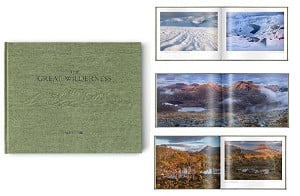
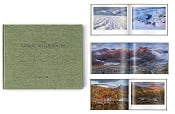







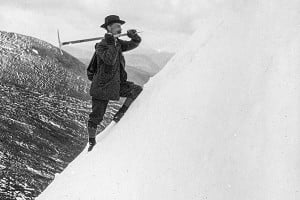




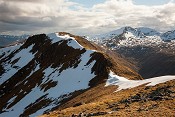

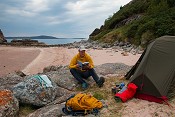

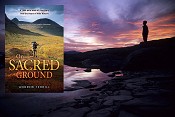

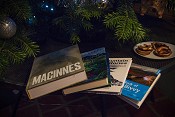






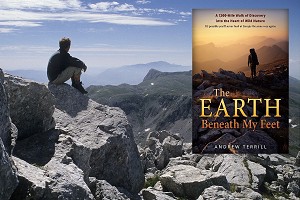
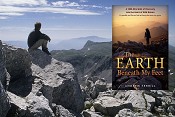
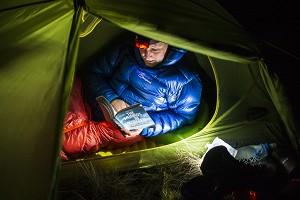

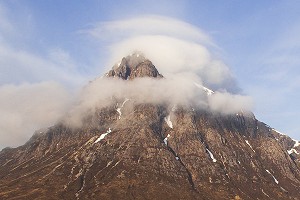
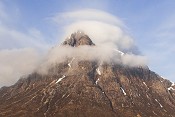




Comments
Thanks Dan - great review of what sounds like a very interesting book. I’d never heard of Ethel; looking forward to changing that now.
I have a copy of 'Protecting the beautiful frame' , published in 2001, in which Ethel features heavily. Well worth a read. I must complement it with this latest book.
john Gresty
Maybe not quite on topic, but isn't that a great photo, Nick Brown's "The enlightening view from Higgar Tor"
I would like to read this book, an interesting topic and though I've never read anything by Helen I'm aware of her great reputation as a writer and poet.
However, is there any mention of contemporary renewable energy developments in Helen's book, or is that shoe horned in by the reviewer? I can't imagine a good biographer would do that.
Hi Mike,
It's a great book, you should definitely give it a go.
I think 'shoehorned' sounds negative, maybe that's your impression.
No, there's little mention of the wider contemporary world in Ethel. But I was very struck by the historical parallels. We're in a time it seems of immense change in planning policy (in England at least - Wales and Scotland already have more development-oriented regimes). This may alter how the countryside looks and feels in a more radical way than at any time since Ethel and her generation helped establish NPs and planning as we know it. Hers and ours are arguably inflection points.
We have a choice as we go forward, in terms of how and where we build. The key message I took from the book is that, as we address climate change (and we must), we ought to do so in a nuanced and holistic way, taking into account humans in the landscape as well as the other huge concerns. I fear the things Ethel and others fought hard for over decades, the landscape/cultural/outdoor heritage that we all now benefit from, are in danger of getting shouted down or simply bulldozed. That would be to everyone's long term detriment.
As I said in the review, the publication of Ethel is really timely. I think it brings something very humane and considered to a conversation that's too often seen in black and white terms.